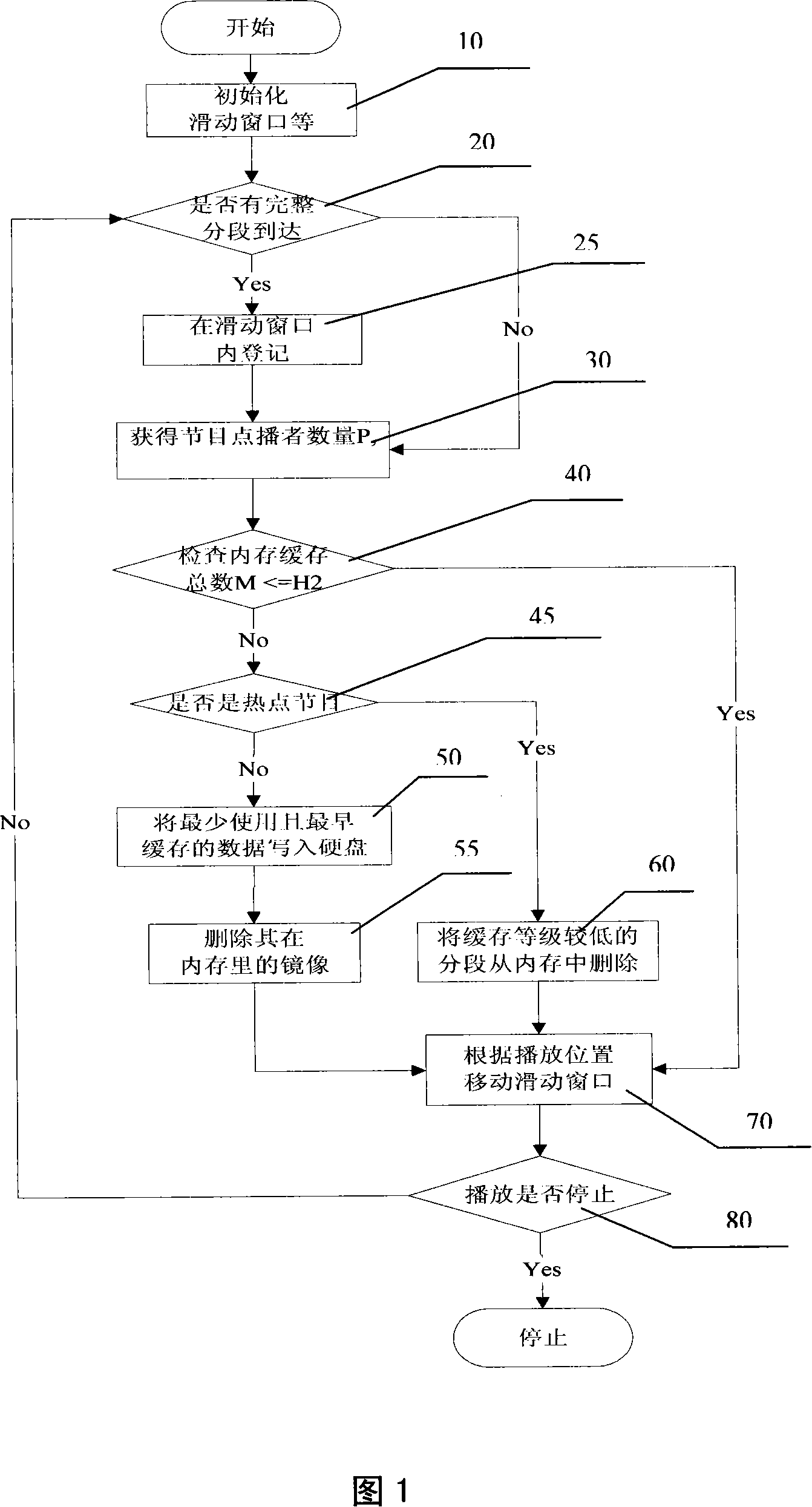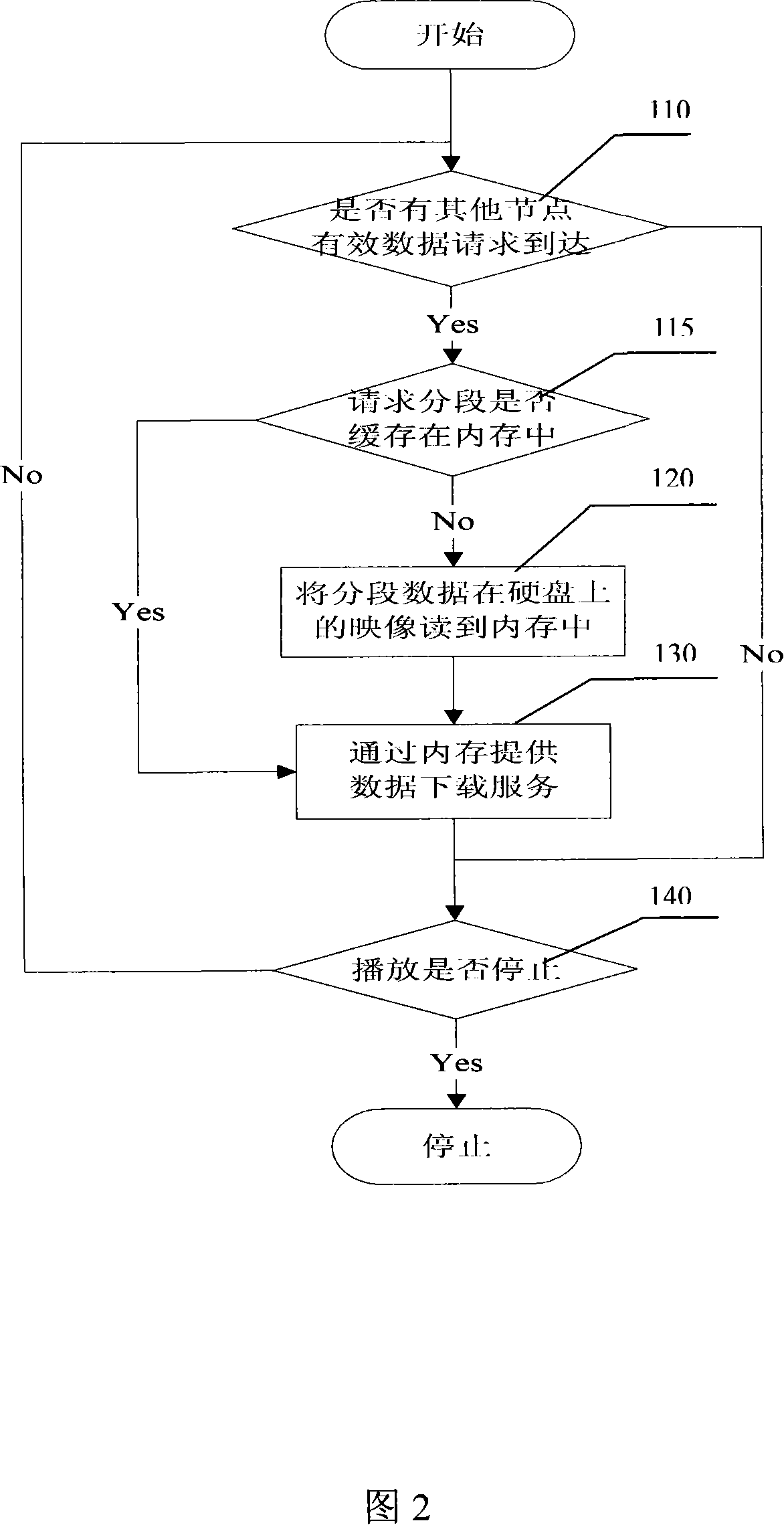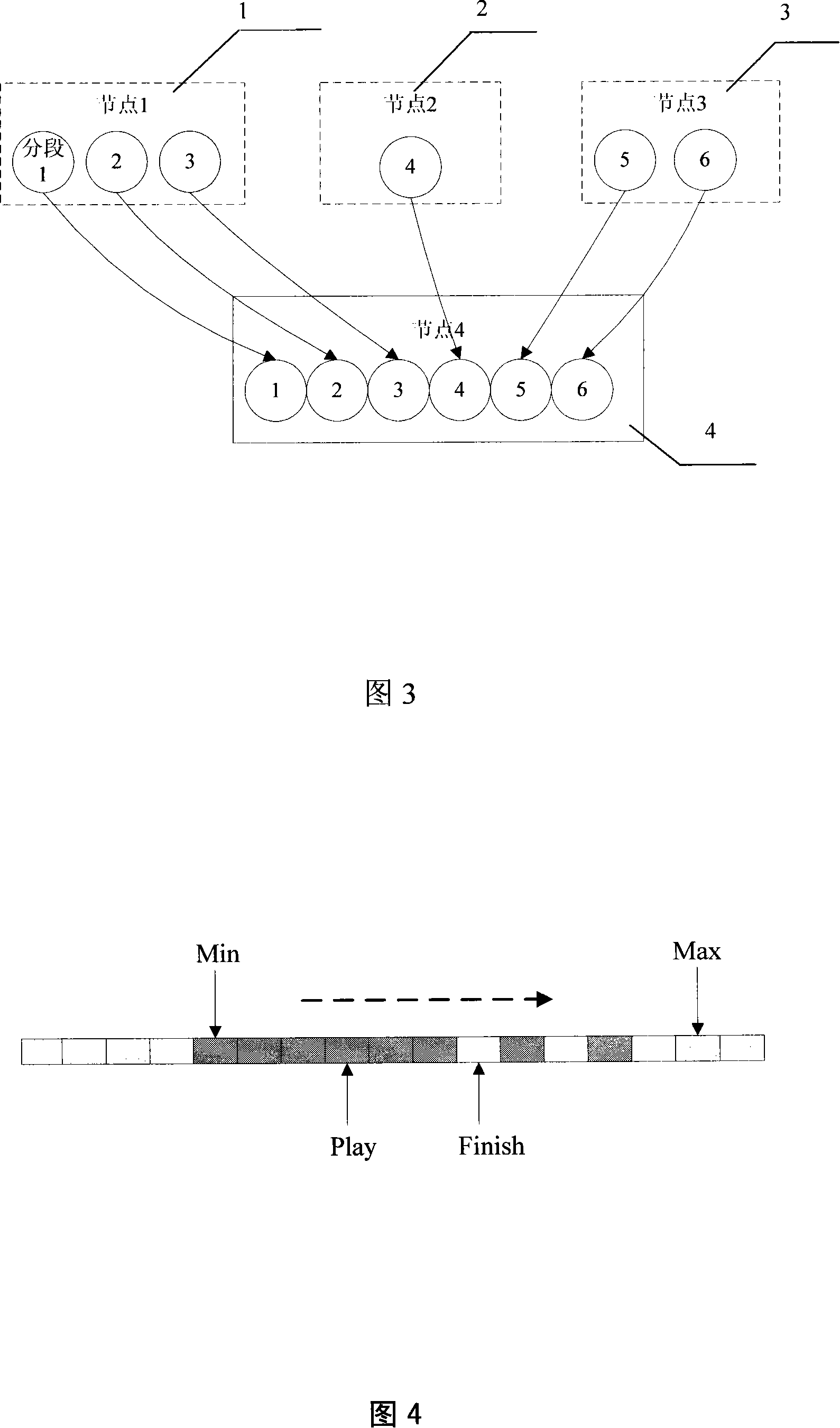P2P technique based video on-demand program caching method
A video-on-demand and program technology, applied in the direction of two-way working systems, etc., can solve the problem that personal computers cannot meet large-scale cache requirements, achieve good user satisfaction, improve efficiency, and reduce the number of reads and writes
- Summary
- Abstract
- Description
- Claims
- Application Information
AI Technical Summary
Problems solved by technology
Method used
Image
Examples
Embodiment Construction
[0022] The method for caching video-on-demand programs of the present invention will be described in detail below with reference to the accompanying drawings.
[0023] Fig. 3 is a schematic diagram of a node downloading data segments from other nodes in the video-on-demand program caching method of the present invention. As shown in Figure 3, in a p2p-based video-on-demand system, the program source generally adopts the method of segmenting, video data is divided into equal-length or variable-length data blocks, and segments are used as the smallest unit of data scheduling and playback , so that a point-to-point solution for downloading video data from multiple nodes can be realized. In the figure, 4 indicates the node to download segmented data, and 1, 2, and 3 respectively indicate other nodes connected to node 4. Node 4 has downloaded different segmented data from different nodes respectively. Nodes have the characteristics of selfishness. Nodes are often more willing to ...
PUM
 Login to View More
Login to View More Abstract
Description
Claims
Application Information
 Login to View More
Login to View More - R&D
- Intellectual Property
- Life Sciences
- Materials
- Tech Scout
- Unparalleled Data Quality
- Higher Quality Content
- 60% Fewer Hallucinations
Browse by: Latest US Patents, China's latest patents, Technical Efficacy Thesaurus, Application Domain, Technology Topic, Popular Technical Reports.
© 2025 PatSnap. All rights reserved.Legal|Privacy policy|Modern Slavery Act Transparency Statement|Sitemap|About US| Contact US: help@patsnap.com



